Updated answer
First of all - I would highly recommend the approach @mm8 has suggested, or exposing Command(s) (such as RefreshCommand) on your views to achieve the same.
But if that is not an option; then I believe you can create a custom attached event that can technically bind the view-model's event to the control's eventhandler; while maintaining the MVVM level of separation.
For example, you can define an attached event in following manner:
// ViewModel event args
public class MyEventArgs : EventArgs
{
public object Param { get; set; }
}
// Interim args to hold params during event transfer
public class InvokeEventArgs : RoutedEventArgs
{
public InvokeEventArgs(RoutedEvent e) : base(e) { }
public object Param { get; set; }
}
// Base view model
public class ViewModelBase
{
public event EventHandler<MyEventArgs> MyEvent1;
public event EventHandler<MyEventArgs> MyEvent2;
public void TransferClick1()
{
MyEvent1?.Invoke(this, new MyEventArgs { Param = DateTime.Now }); // to simulate the click at View
}
public void TransferClick2()
{
MyEvent2?.Invoke(this, new MyEventArgs { Param = DateTime.Today.DayOfWeek }); // to simulate the click at View
}
}
// the attached behavior that does the magic binding
public class EventMapper : DependencyObject
{
public static string GetTrackEventName(DependencyObject obj)
{
return (string)obj.GetValue(TrackEventNameProperty);
}
public static void SetTrackEventName(DependencyObject obj, string value)
{
obj.SetValue(TrackEventNameProperty, value);
}
public static readonly DependencyProperty TrackEventNameProperty =
DependencyProperty.RegisterAttached("TrackEventName",
typeof(string), typeof(EventMapper), new PropertyMetadata
(null, new PropertyChangedCallback(OnTrackEventNameChanged)));
private static void OnTrackEventNameChanged(DependencyObject d, DependencyPropertyChangedEventArgs args)
{
FrameworkElement uie = d as FrameworkElement;
if (uie == null)
return;
var eventName = GetTrackEventName(uie);
if (string.IsNullOrWhiteSpace(eventName))
return;
EventHandler<MyEventArgs> vmEventTracker = delegate (object sender, MyEventArgs e) {
Application.Current.Dispatcher.Invoke(() =>
uie.RaiseEvent(new InvokeEventArgs(EventMapper.OnInvokeEvent)
{
Source = sender,
Param = e?.Param
}));
};
uie.DataContextChanged += (object sender, DependencyPropertyChangedEventArgs e) =>
{
var oldVM = e.OldValue;
var newVM = e.NewValue;
if (oldVM != null)
{
var eventInfo = oldVM.GetType().GetEvent(eventName);
eventInfo?.RemoveEventHandler(oldVM, vmEventTracker);
}
if (newVM != null)
{
var eventInfo = newVM.GetType().GetEvent(eventName);
eventInfo?.AddEventHandler(newVM, vmEventTracker);
}
};
var viewModel = uie.DataContext;
if (viewModel != null)
{
var eventInfo = viewModel.GetType().GetEvent(eventName);
eventInfo?.AddEventHandler(viewModel, vmEventTracker);
}
}
public static readonly RoutedEvent OnInvokeEvent =
EventManager.RegisterRoutedEvent("OnInvoke",
RoutingStrategy.Direct, typeof(RoutedEventHandler), typeof(EventMapper));
public static void AddOnInvokeHandler(DependencyObject d, RoutedEventHandler handler)
{
FrameworkElement uie = d as FrameworkElement;
if (uie != null)
{
uie.AddHandler(OnInvokeEvent, handler);
}
}
public static void RemoveOnInvokeHandler(DependencyObject d, RoutedEventHandler handler)
{
FrameworkElement uie = d as FrameworkElement;
if (uie != null)
{
uie.RemoveHandler(OnInvokeEvent, handler);
}
}
}
Sample 1 - Event handler
XAML Usage
<StackPanel Margin="20">
<Button Margin="10" Content="Invoke VM event" Click="InvokeEventOnVM" />
<Button Content="View Listener1"
local:EventMapper.TrackEventName="MyEvent1"
local:EventMapper.OnInvoke="SimulateClick1" />
<Button Content="View Listener2"
local:EventMapper.TrackEventName="MyEvent1"
local:EventMapper.OnInvoke="SimulateClick1" />
<Button Content="View Listener3"
local:EventMapper.TrackEventName="MyEvent2"
local:EventMapper.OnInvoke="SimulateClick2" />
</StackPanel>
Sample code-Behind for above XAML:
private void SimulateClick1(object sender, RoutedEventArgs e)
{
(sender as Button).Content = new TextBlock { Text = (e as InvokeEventArgs)?.Param?.ToString() };
}
private void SimulateClick2(object sender, RoutedEventArgs e)
{
SimulateClick1(sender, e);
(sender as Button).IsEnabled = !(sender as Button).IsEnabled; //toggle button
}
private void InvokeEventOnVM(object sender, RoutedEventArgs e)
{
var vm = new ViewModelBase();
this.DataContext = vm;
vm.TransferClick1();
vm.TransferClick2();
}

Sample 2 - Event Trigger (updated 07/26)
XAML Usage
<Button Content="View Listener"
local:EventMapper.TrackEventName="MyEvent2">
<Button.Triggers>
<EventTrigger RoutedEvent="local:EventMapper.OnInvoke">
<BeginStoryboard>
<Storyboard>
<DoubleAnimation AutoReverse="True" Storyboard.TargetProperty="Opacity" To="0" Duration="0:0:1" />
</Storyboard>
</BeginStoryboard>
</EventTrigger>
</Button.Triggers>
</Button>
